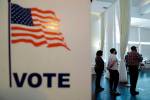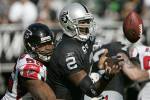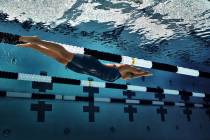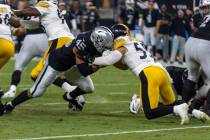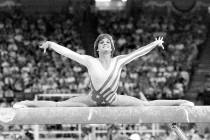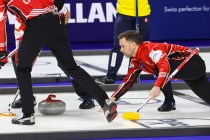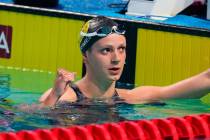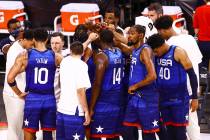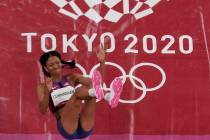Sponsorship rules anger athletes
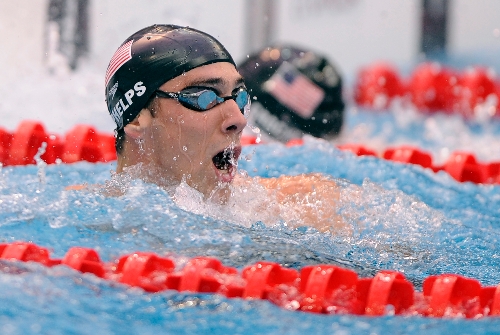
COLORADO SPRINGS, Colo. – Olympians should have figured out one thing by now: What they can or cannot wear at the London Games has very little to do with their fashion, marketing sense or patriotism, and a whole lot to do with rules, regulations and, of course, money.
The overseers of the Olympics are protective of their brand and rings – considered one of the most recognizable logos in sports – and what the athletes wear when they’re competing has been tightly regulated, much to the chagrin of some of the games’ stars.
Take Michael Phelps, for example. He recently tweeted his dismay at no longer being allowed to wear a swimming cap bearing miniature American flags on the front and back.
“Gotta love an organizing committee telling us we can’t do that anymore,” he said on Twitter.
But neither the International nor U.S. Olympic Committees are making any apologies. The IOC keeps a tight grip on when and where advertising and other markings can be worn at the games. After all, its coffers took in more than $2.4 billion (over the four-year period ending in 2008, for instance) in marketing rights from such companies as McDonald’s and Coca-Cola.
The USOC and the federations that run the individual sports follow suit, paying respect to domestic and international sponsors who more or less bankroll the entire endeavor, which, in turn, provides the funding for the athletes.
“Our objective,” said USOC head Scott Blackmun, “is to be able to support as many athletes who have a chance to represent us at the Olympic Games.”
Not satisfied with the support he receives, American runner Nick Symmonds resorted to selling body space earlier this year.
Symmonds, one of the most outspoken athletes on this issue, was paid $11,100 by a Wisconsin-based lifestyle marketing firm for wearing a tattoo of their logo on his shoulder. He’ll need to cover it with tape at the Olympics so he can conform to the IOC’s detailed guidelines about logos, advertising and manufacturer identification.
“My No. 1 goal, aside from making the Olympic team and winning a medal, is to bring awareness to how many struggling athletes there are out there – and wouldn’t it be nice if we could just lift these regulations and allow athletes to pursue individual sponsorships a little more freely,” Symmonds said earlier this year.
Not surprisingly, Symmonds was one of the first athletes to chime in last week when U.S. politicians called out the USOC for outfitting its athletes with Chinese-made uniforms produced by American-based manufacturer Ralph Lauren.
“Our Ralph Lauren outfits for the Olympic opening ceremonies were made in China. So, um, thanks China,” Symmonds said in a tweet.
It was an embarrassment for both the apparel maker – future uniforms will be USA-made – and the USOC, which was careful to say it appreciates all sponsors, even those who make clothes in China, because it is a nonprofit that receives no government funding.
“The most important thing to remember is that, unlike professional leagues in the U.S., where you’re trying to decide how much goes to owners and how much goes to athletes, in our environment, all the money goes to athletes,” Blackmun said. “There are no owners putting money in their pockets. It’s a completely nonprofit environment. It’s a different environment than the marketing environment you see in pro leagues.”
About 85 percent of the money the USOC makes goes back to athletes in one form or another, some to fund training, some in payments to the organizations that run their sports and some in a prize fund that awards money for top finishers at the Olympics.
Some athletes, however, see big numbers being tossed around – $4.38 billion for a TV deal with NBC, $13 million for a beer company’s sponsorship package with the USOC – and wonder why they can’t get a little bigger piece of the pie.
The issue came up in a more high-profile context earlier this year when NBA stars Dwyane Wade and Ray Allen suggested Olympic athletes should be paid and Dallas Mavericks owner Mark Cuban agreed.
“If you look up stupid in the dictionary you see a picture of the USA Dream Team playing for free for corporate America so the U.S. Olympic Committee can make billions of dollars,” Cuban said. “So if you come up with something that you own that you can give to me for free so I can make billions of dollars, I want it.”
In April, 18 Olympians sued an Olympic sponsor, Samsung, that used their names and images in a promotion before getting permission. The USOC, which originally told athletes they had to opt out of the program, changed its policy and said they had to opt in. The USOC viewed the project as a chance to increase exposure, while the athletes looked at it as another way the USOC was infringing upon their marketing rights.
“Their holier-than-thou attitude that the Olympics is their creation doesn’t give them carte blanche to violate those who enjoy the opportunity to go,” said Evan Morgenstein, an agent for some of those who filed the lawsuit. “They’ve created this opportunity for so many people. OK, so now you’re going to take advantage of that? What kind of rationale is that?”
Of the 530 athletes who made the U.S. team, Morgenstein estimates only about 5 percent to 10 percent get direct contributions from Olympic sponsors. Some, then, go outside the Olympic family of sponsors, where athletes can market themselves, but with no references to the Olympics or its markings. Of course, when a viewer sees Phelps or gymnast Nastia Liukin on a Subway commercial, the connection is obvious, even without the Olympic rings.
The USOC calls this “ambush marketing,” and says anything that devalues the Olympic brand hurts all athletes.
“I understand their frustration,” Blackmun said. “But the answer is not to remove restrictions, because if we do, we can’t support athletes collectively at the level we do today.”





